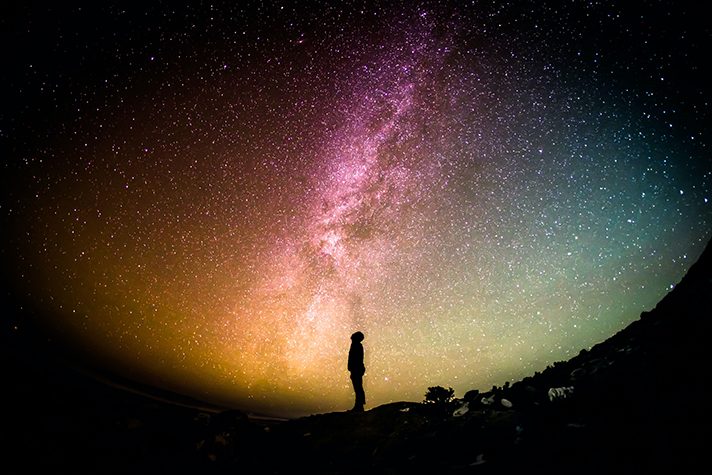
“God is light, and in him is no darkness at all.” —1 John 1:5
On November 1, people across 48 U.S. states will set their clocks ahead one hour, ending daylight saving time until March.
The transition to darker evenings and lighter mornings can be hard on our bodies. This shift in light can affect people’s sleep, energy and even mood.
And though it’s more noticeable in the spring and fall, the contrast between light and dark has proved mysterious since time began.
How was there light before the sun? Which came first, light or darkness?
As you “fall back” this autumn, explore the deeper need for light—its origin, spiritual darkness and how the absence of light can connote sin.
Light Enters the World
When God formed the world, He created light and darkness, and then separated them. In Genesis 1, He commanded “let there be light” and saw that it was good.
>>Did God really create our earth? Find out more.
Christ’s purpose in coming to earth was to rescue mankind from sin and death. The Bible says in John 3:19, “The light has come into the world, and people loved the darkness rather than the light because their works were evil.”
>>What is the light of Christ?
People who follow Christ are to spread His light to others, following Jesus’ commandment in Mark 16:15. After Jesus died on the cross and was resurrected, He told His disciples: “Go into all the world and proclaim the gospel to the whole creation.”
>>Watch this 1-minute message from Billy Graham about hope, joy and peace.
Darkness and Evil
Darkness is oftentimes associated with evil. For instance, most violent crimes take place at night, when perpetrators can hide more easily. Others go to the “dark web,” an online marketplace notorious for anonymous criminal activity.
God sees everything, however. Like our defiance, immorality and deception, all of which Anne Graham Lotz notes in her Bible study “Holes in the Darkness.”
Lotz writes how these and other sins define today’s world: “Our nation and our world are growing darker by the moment,” she said, also explaining our hope.
“God’s response to darkness was to turn on the Light,” she wrote. “Thousands of years later, on a dark, starry night outside of Bethlehem, once again God spoke into the darkness and in essence said, ‘Let there be Light.’ And a Baby was born—a Baby who was Himself the Light of the world. And human history was forever changed.”
Spiritual Darkness
Many people want nothing to do with God or Jesus, and are “living in spiritual darkness, confused, frustrated, disturbed and fearful,” Billy Graham wrote in his My Answers, a long-established Q&A column.
It’s no surprise that with people losing hope in our country, atheism is on the rise. In contrast, Christianity is decreasing, according to a 2020 Barna survey.
Though some people admit they’re lost, they don’t have to live that way. Sin and pride are what keep many from following Christ.
Jesus came to show us a way out of spiritual darkness. In John 8:12, He said, “I am the light of the world. Whoever follows me will not walk in darkness, but will have the light of life.”
“The Bible is clear that moral and spiritual darkness has always been the case for a world that rejects and refuses to acknowledge God,” wrote Franklin Graham.
In 2020, a black cloud has seemingly lingered over the U.S. with political and racial division, COVID-19, and economic challenges.
However, we can find peace when we look at the world through a spiritual lens and remember God’s promises.
“We know that however great and wide the spread of darkness over the world may be, it can never extinguish the True Light,” Franklin Graham explained. “The light shines in the darkness, and the darkness has not overcome it” (John 1:5).
At this moment, you can find new life in Christ. Invite Him into your heart.
Are you a light in the darkness? Be encouraged by Billy Graham’s answer.

